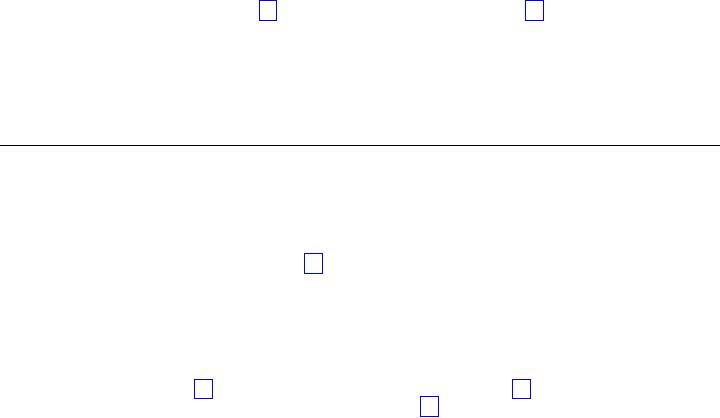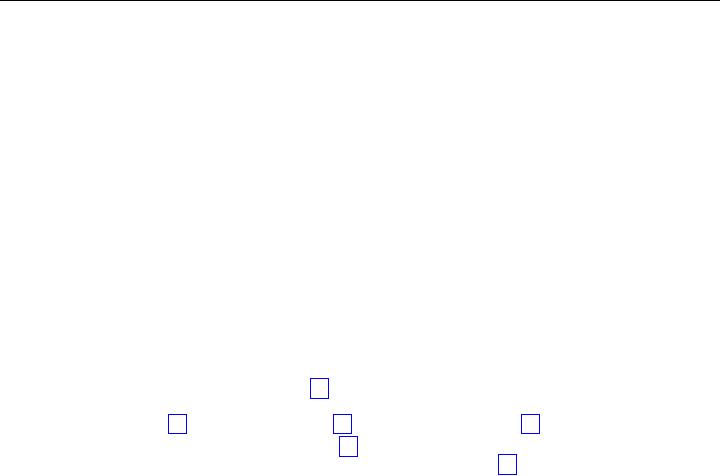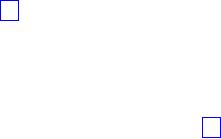 |
Files and Streams:Text and Binary Streams, Controlling Streams, Stream States |
| << Expressions |
| Indefinite Integrals of Logarithmic Functions:Combinations of Logarithms and Polynomials, The Logarithm >> |

Chapter
5. Files and Streams
A
program communicates with the
target environment by reading and
writing files
(ordered
sequences of bytes). A file
can be, for example, a data
set that you can
read
and write repeatedly (such as a
disk file), a stream of
bytes generated by a
program
(such as a pipeline), or a stream of
bytes received from or sent to
a
peripheral
device (such as the keyboard
or display). The latter two
are interactive
files.
Files are typically the
principal means by which to
interact with a program.
You
manipulate all these kinds
of files in much the same
way -- by calling library
functions.
You include the standard
header <stdio.h>
to
declare most of these
functions.
Before
you can perform many of the
operations on a file, the
file must be opened.
Opening
a file associates it with a stream,
a data structure within the
Standard C
library
that glosses over many
differences among files of
various kinds. The
library
maintains
the state of each stream in
an object of type FILE.
The
target environment opens
three files prior to program
startup. You can open
a
file
by calling the library
function fopen with two arguments.
The first argument is
a
filename, a multibyte string
that the target environment
uses to identify
which
file
you want to read or write. The
second argument is a C string
that specifies:
v
whether
you intend to read data from
the file or write data to it
or both
v
whether
you intend to generate new contents for
the file (or create a
file if it did
not
previously exist) or leave
the existing contents in
place
v
whether
writes to a file can alter
existing contents or should
only append bytes
at
the end of the
file
v
whether
you want to manipulate a text stream
(page 17)
or a binary stream
(page
18)
Once
the file is successfully
opened, you can then
determine whether the stream
is
byte
oriented (a
byte
stream (page 18))
or wide
oriented (a
wide
stream (page
18)).
Wide-oriented streams are
supported only with Amendment 1. A
stream is
initially
unbound.
Calling certain functions to
operate on the stream makes
it byte
oriented,
while certain other
functions make it wide oriented.
Once established, a
stream
maintains its orientation
until it is closed by a call to
fclose
or
freopen.
Text
and Binary
Streams
A
text
stream consists
of one or more lines
of
text that can be written to
a
text-oriented
display so that they can be
read. When reading from a
text stream,
the
program reads an NL
(newline)
at the end of each line.
When writing to a
text
stream,
the program writes an
NL
to
signal the end of a line. To
match differing
conventions
among target environments for
representing text in files,
the library
functions
can alter the number and
representations of characters
transmitted
between
the program and a text
stream.
Thus,
positioning within a text
stream is limited. You can
obtain the current
file-position
indicator (page 19)
by calling fgetpos or ftell. You
can position a text
17

stream
at a position obtained this
way, or at the beginning or
end of the stream, by
calling
fsetpos
or
fseek. Any
other change of position
might well be not
supported.
For
maximum portability, the
program should not
write:
v
empty
files
v
space
characters
at the end of a line
v
partial
lines (by omitting the
NL
at the
end of a file)
v
characters
other than the printable
characters, NL, and
HT
(horizontal
tab)
If
you follow these rules, the
sequence of characters you read from a
text stream
(either
as byte or multibyte characters) will
match the sequence of
characters you
wrote
to the text stream when you
created the file. Otherwise,
the library functions
can
remove a file you create if
the file is empty when you
close it. Or they
can
alter
or delete characters you write to
the file.
A
binary
stream consists
of one or more bytes of
arbitrary information. You
can
write
the value stored in an
arbitrary object to a (byte-oriented)
binary stream and
read
exactly what was stored in
the object when you wrote
it. The library
functions
do
not alter the bytes you
transmit between the program
and a binary stream.
They
can, however, append an
arbitrary number of null bytes to
the file that you
write
with a binary stream. The
program must deal with these
additional null
bytes
at the end of any binary
stream.
Thus,
positioning within a binary
stream is well defined, except for
positioning
relative
to the end of the stream.
You can obtain and alter
the current
file-position
used
by ftell
and
fseek
count
bytes from the beginning of
the stream (which is
byte
zero), so integer arithmetic on
these offsets yields
predictable results.
A
byte
stream treats a
file as a sequence of bytes.
Within the program, the
stream
looks
like the same sequence of
bytes, except for the
possible alterations
described
above.
Byte
and Wide Streams
While
a byte
stream treats a
file as a sequence of bytes, a
wide
stream treats a
file
as
a sequence of generalized
multibyte characters, which
can have a broad
range
of
encoding rules. (Text and
binary files are still
read and written as
described
above.)
Within the program, the
stream looks like the
corresponding sequence of
wide
characters (page 13).
Conversions between the two
representations occur
within
the Standard C library. The
conversion rules can, in
principle, be altered by
a
call to setlocale
that
alters the category
LC_CTYPE. Each wide
stream
determines
its conversion rules at the
time it becomes wide oriented, and
retains
these
rules even if the category
LC_CTYPE subsequently
changes.
Positioning
within a wide stream suffers
the same limitations as for
text streams
with
a state-dependent encoding (page 12).
Typically, it includes both a
byte offset
within
the stream and an object of
type mbstate_t. Thus, the
only reliable way to
obtain
a file position within a wide
stream is by calling fgetpos, and
the only
reliable
way to restore a position obtained
this way is by calling fsetpos.
18
Standard
C++ Library

Controlling
Streams
fopen
returns
the address of an object of
type FILE. You use
this address as the
stream
argument
to several library functions to
perform various operations on
an
open
file. For a byte stream,
all input takes place as if
each character is read
by
calling
fgetc, and
all output takes place as if
each character is written by
calling
fputc. For a
wide stream (with Amendment 1),
all input takes place as if
each
character
is read by calling fgetwc, and
all output takes place as if
each character is
written
by calling fputwc.
You
can close
a
file by calling fclose, after
which the address of the
FILE object is
invalid.
A
FILE object stores the
state of a stream,
including:
v
an
error
indicator -- set
nonzero by a function that
encounters a read or
write
error
v
an
end-of-file
indicator -- set
nonzero by a function that
encounters the end of
the
file while reading
v
a
file-position
indicator --
specifies the next byte in
the stream to read or
write,
if
the file can support
positioning requests
v
a
stream
state (page 20)
--
specifies whether the stream
will accept reads
and/or
writes and, with Amendment 1,
whether the stream is
unbound (page
v
a
conversion
state (page 12)
--
remembers the state of any
partly assembled or
generated
generalized multibyte character
(page 18),
as well as any shift state
for
the
sequence of bytes in the
file)
v
a
file
buffer --
specifies the address and
size of an array object that
library
functions
can use to improve the
performance of read and write
operations to
the
stream
Do
not alter any value
stored in a FILE
object
or in a file buffer that you
specify for
use
with that object. You cannot
copy a FILE
object
and portably use the address
of
the
copy as a stream
argument
to a library function.
19
Chapter
5. Files and Streams

Stream
States
The
valid states, and state transitions, for
a stream are shown in the
diagram.
Each
of the circles denotes a
stable state. Each of the
lines denotes a transition
that
can
occur as the result of a
function call that operates
on the stream. Five
groups
of
functions can cause state
transitions.
Functions
in the first three groups
are declared in
<stdio.h>:
v
the
byte
read functions -- fgetc, fgets, fread, fscanf, getc, getchar, gets,
scanf, and ungetc
v
the
byte
write functions -- fprintf, fputc, fputs, fwrite, printf, putc, putchar,
puts, vfprintf, and vprintf
v
the
position
functions -- fflush, fseek, fsetpos, and rewind
Functions
in the remaining two groups
are declared in <wchar.h>:
v
the
wide
read functions -- fgetwc, fgetws, fwscanf, getwc, getwchar, ungetwc,
and
wscanf
v
the
wide
write functions -- fwprintf, fputwc, fputws, putwc, putwchar,
vfwprintf, vwprintf, and wprintf
For
the stream s, the
call fwide(s,
0) is
always valid and never causes a
change of
state.
Any other call to fwide, or to
any of the five groups of
functions described
above,
causes the state transition
shown in the state diagram.
If no such transition
is
shown, the function call is
invalid.
The
state diagram shows how to
establish the orientation of a
stream:
v
The
call fwide(s,
-1), or
to a byte read or byte write
function, establishes
the
stream
as byte oriented (page 17).
20
Standard
C++ Library

v
The
call fwide(s,
1), or
to a wide read or wide write function,
establishes the
stream
as wide oriented (page 17).
The
state diagram shows that you
must call one of the
position functions
between
most
write and read
operations:
v
You
cannot call a read function
if the last operation on the
stream was a write.
v
You
cannot call a write function
if the last operation on the
stream was a read,
unless
that read operation set
the end-of-file indicator
(page 19).
Finally,
the state diagram shows
that a position operation
never decreases
the
number
of valid function calls that
can follow.
21
Chapter
5. Files and Streams
22
Standard
C++ Library
Table of Contents:
- C++ Library
- C++ Library Overview:Using C++ Library Headers, Iostreams Conventions
- Characters:Escape Sequences, Multibyte Characters, Wide-Character Encoding
- Expressions
- Files and Streams:Text and Binary Streams, Controlling Streams, Stream States
- Indefinite Integrals of Logarithmic Functions:Combinations of Logarithms and Polynomials, The Logarithm
- Formatted Input:Scan Formats, Scan Functions, Scan Conversion Specifiers
- Formatted Output:Print Formats, Print Functions, Print Conversion Specifiers
- STL Conventions:Iterator Conventions, Algorithm Conventions
- Containers:Cont::const_reference, difference_type, reverse_iterator
- Preprocessing
- Standard C++ Library Header Files:bitset, conj, cos, showpoint, streampos
- Standard Template Library C++:adjacent_find, copy_backward, lexicographical_compare
- Appendix. Type Traits:Helper Class, Primary Type Categories, Binary Type Traits
- Notices:References, Bug Reports